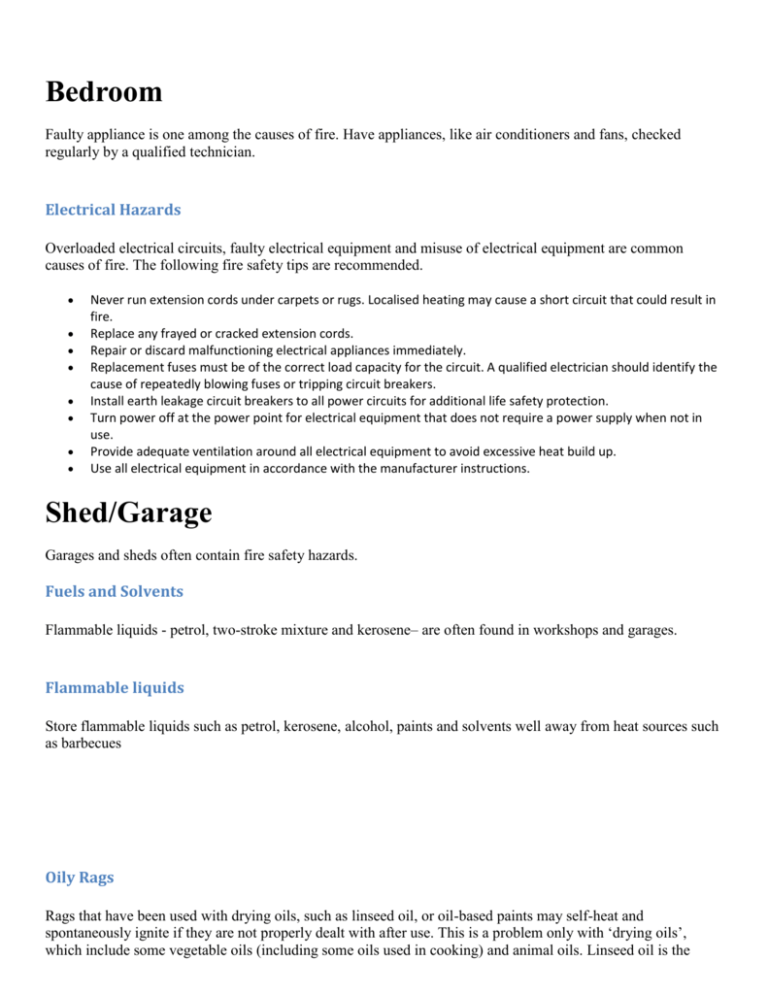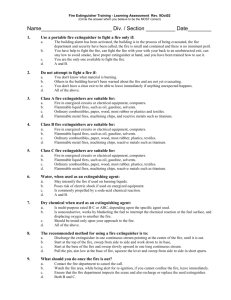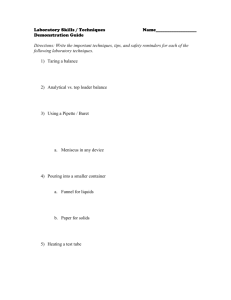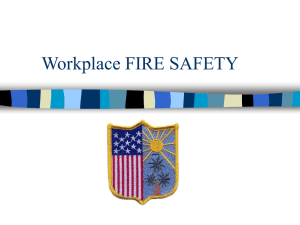Other useful tips
advertisement

Bedroom Faulty appliance is one among the causes of fire. Have appliances, like air conditioners and fans, checked regularly by a qualified technician. Electrical Hazards Overloaded electrical circuits, faulty electrical equipment and misuse of electrical equipment are common causes of fire. The following fire safety tips are recommended. Never run extension cords under carpets or rugs. Localised heating may cause a short circuit that could result in fire. Replace any frayed or cracked extension cords. Repair or discard malfunctioning electrical appliances immediately. Replacement fuses must be of the correct load capacity for the circuit. A qualified electrician should identify the cause of repeatedly blowing fuses or tripping circuit breakers. Install earth leakage circuit breakers to all power circuits for additional life safety protection. Turn power off at the power point for electrical equipment that does not require a power supply when not in use. Provide adequate ventilation around all electrical equipment to avoid excessive heat build up. Use all electrical equipment in accordance with the manufacturer instructions. Shed/Garage Garages and sheds often contain fire safety hazards. Fuels and Solvents Flammable liquids - petrol, two-stroke mixture and kerosene– are often found in workshops and garages. Flammable liquids Store flammable liquids such as petrol, kerosene, alcohol, paints and solvents well away from heat sources such as barbecues Oily Rags Rags that have been used with drying oils, such as linseed oil, or oil-based paints may self-heat and spontaneously ignite if they are not properly dealt with after use. This is a problem only with ‘drying oils’, which include some vegetable oils (including some oils used in cooking) and animal oils. Linseed oil is the best-known example of a ‘drying oil’. Mineral oils, like white spirit, mineral turpentine or lubricating oil, are not prone to self-heating and will not ignite spontaneously. Rags used with oil-based paints or glazes, linseed oil or other drying oils should either be immersed in water or spread out in a safe place to dry immediately after use. If it is necessary to transport oil or paint-soaked rags, they should be carried in sealed metal containers. Quick tips Get rid of flammable rubbish, such as oily rags, and open containers of oil or solvents. Never store chemicals, such as chlorine, where they can come into contact with other chemicals. Petrol, kerosene and other flammable liquids must be kept in approved containers and clearly labeled. Petroleum fuels and nitrogen fertilizers can combine in an explosive mixture - store well apart. Do not use naked lights or smoke in the garage or workshop. Always clean up shavings after woodwork. Use properly installed electrical sockets for power tools. Avoid makeshift wiring extensions and double adaptors. Where possible choose non-flammable paints, strippers, cleaners etc. Fuel lawnmowers and other motors outdoors only. Where electric welders are used, ensure the working area is kept clear of flammable materials, and the equipment is switched off and left safe after use. Remember, sheds and garages are not a safe environment for children. Fire Safety for Gas Gas cookers and water heaters Remember LPG and air form an explosive mixture - always be ready to light the burner before you turn on the gas. If the pilot light does not ignite the burner at once, turn off the gas and check that the pilot is alight. All gas heaters should have a guard on them. If you smell gas Put out cigarettes. Do not use matches or naked flames. Do not operate electrical switches - either on or off. Open doors and window to ventilate the area. Check to see if a gas tap has been left on accidentally or if a pilot light has gone out. If not, there is probably a gas leak and you should turn off the supply at the meter and call the gas service. Don't take chances, at home or in the street. If you suspect a gas leak contact a licensed gasfitter Gas in cylinders Change gas cylinders in the open air wherever possible, and always with the tap turned off. Always replace the cap on the cylinder valve when the cylinder is empty or not in use. Keep spare cylinders outside but protected against direct sunlight. Ensure that the flexible hose on your cylinder is suitable for gas and conforms to British standards. Fire Safety Products There is a range of fire safety products on the market that can help prevent and respond to fires. Products such as fire retardant paint can help stop a fire from either commencing or spreading. Fire blankets and fire extinguishers can be helpful in putting out a minor fire. The Fire Services recommends that you consider these products for your particular circumstance. Fire Extinguishers Dry Chemical Powder This type of extinguisher is suitable for most household fires. A one kilogram Dry Chemical Fire Extinguisher will last approximately 10 to 12 seconds. This type of extinguisher is effective against small fires. Maintenance Monitor the pressure gauge to ensure correct pressure. Shake it occasionally to prevent the powder from settling. Have it serviced every six months and pressure tested every five years by a qualified person. Refill your extinguisher, as soon as possible, after it has been used. Use a fire extinguisher ONLY if: you know that the extinguisher is suitable for use on the flammable materials involved in the fire; you have considered whether electricity is possibly involved and, if so, that the available extinguishing agent is non-conducting; you can extinguish the fire quickly; you are not putting your life at risk by staying in the vicinity of the fire; and all other persons have been evacuated from the area. Fire Blankets When to use a Fire Blanket A fire blanket is ideal for cooking fat fires and can be used to wrap around people if their clothes catch on fire. Place (not throw) fire blankets over cooking fat fires, keeping hands and face protected behind it. Turn off the heat source and leave the blanket over the burnt area for at least 15 minutes or until the heat has dissipated. Dial 115 to call the fire service. Fire Blanket Specification It shall be not less than 1 metre by 1 metre. It shall be installed in or close to the kitchen.



